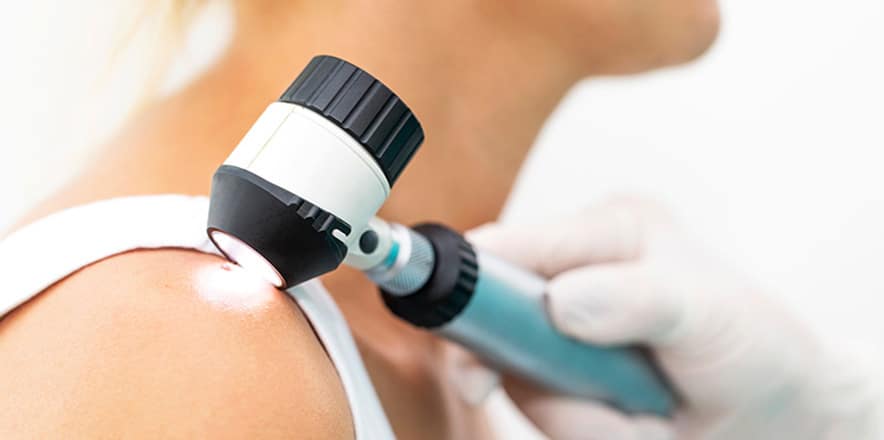Early Signs of Skin Cancer
As summer is upon us, and we’re either coming out of quarantine, or confined to our backyard, everyone is eager to get outdoors and play in the sun. But before you do, make sure you properly prepare your skin for those ultraviolet rays and look for early signs of skin cancer.
It is estimated that one in five people will develop skin cancer in the United States. Skin cancer is categorized as: Melanoma and Non-melanoma. Basal Cell Carcinoma and Squamous Cell Carcinoma are two of the most common non-melanomas. They account for over 90 percent of skin cancers. With uncommon exception, they are considered not lethal. Melanoma is less common, but is the deadliest form of skin cancer. Melanomas, if caught early, have an excellent prognosis. If not caught early, they may spread (metastasize) to other parts of the body. Self skin cancer screening on a monthly basis is recommended.
Skin Cancer Self-Exams
Use a full- length mirror to examine your body. The American Academy of Dermatology Association recommends examining your body from front to back, and then side to side with your arms raised. Make sure to look in creases such as your elbows, in between toes, and behind knees. Use a hand mirror to look at your back, buttock, groin, neck, and scalp.
Skin Cancer First Signs
When conducting a skin cancer screening, keep a look out for the items below.
Non-Melanoma Skin Cancer:
- A hard scaly growth that may or may not be tender.
- A pink or translucent growth whose border is elevated or indented in the center.
- A growth or open sore that bleeds easily and won’t heal.
The general description of a melanoma is a discolored patch of skin, which is flat, dark, and irregular. Using the American Academy of Dermatology’s ABCDE’s is a good starting point for checking melanomas. They are as follows :
- A – ASYMMETRY: A growth in which one half is not the same shape as the other half.
- B – BORDER: A flat or elevated growth with an Irregular outer border.
- C – COLOR: Different color throughout the mole, often in a half hazard way.
- D – DIAMETER: A mole whose diameter is greater than 6mm (the size of an eraser on a pencil). This is less important because a melanoma maybe smaller.
- E – EVOLVING: A mole that has changed over time.
- F – FREAK OUT: Dr. Mekelburg likes to add the letter F. This new growth, whatever it is, freaks you out.
We also recommend that you protect your skin from the sun’s ultraviolet rays by following these tips.
- Seek shade whenever possible, especially between 10:00am-4:00pm. This applies to UVB. However, UVA, which can cause skin cancer, wrinkles and brown spots, is constant from sun-up to sun- down, 365 days a year.
- Wear a broad spectrum, water resistant sunscreen with SPF of 30+ and reapply every two hours. Mineral blocks with zinc and /or titanium dioxide are preferred over chemical sunscreens.
- Cover sun exposed areas like eyes, scalp, face, and shoulders with sunglasses, clothing and hats.
- Avoid the use of tanning beds.
- Sun exposure is cumulative all of it adds up. The skin doses not forget any of it; it just waits.
- For those who worry about not getting enough Vitamin D from the sun, Dr. Mekelburg recommends that one may take an oral supplement of Vitamin D. If you prefer sunlight, expose only the parts of your skin where you don’t mind a skin cancer.
Contact Our Dermatologist Dr. Mekelburg
If you notice a spot that is different from others, that changes, itches or bleeds, or makes you nervous, you should make a skin cancer screening appointment. Dr. Brian Mekelburg and his team would be happy to assist you. Call us at (310) 659-9075 .



